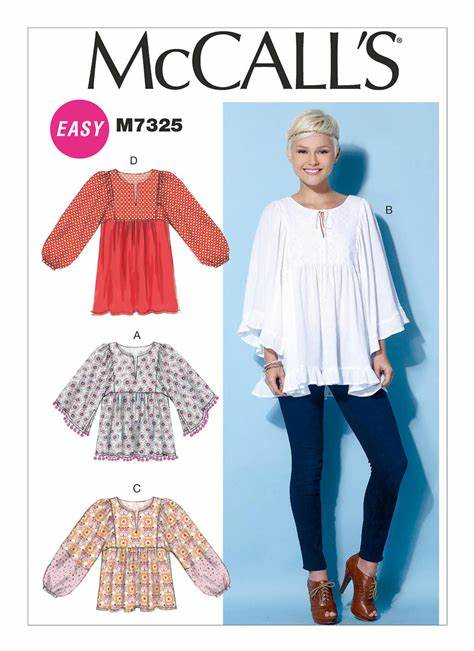
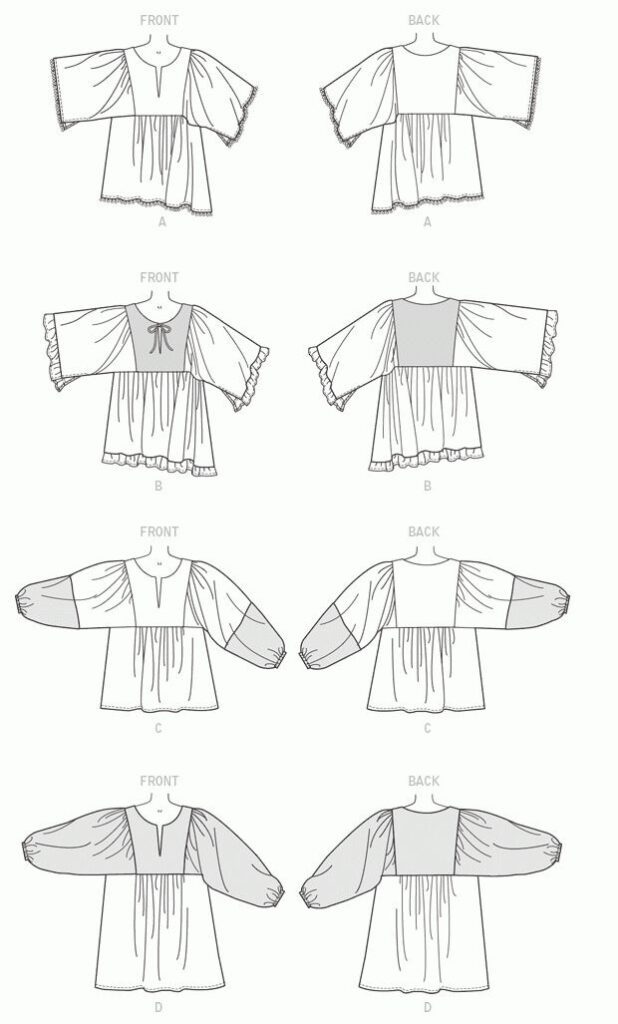
How to make a dream summer dress using McCalls 7325 blouse pattern.
The Pattern
A loose fitting pull on blouse pattern with multiple sleeve options, that has a strong 70’s retro influence.
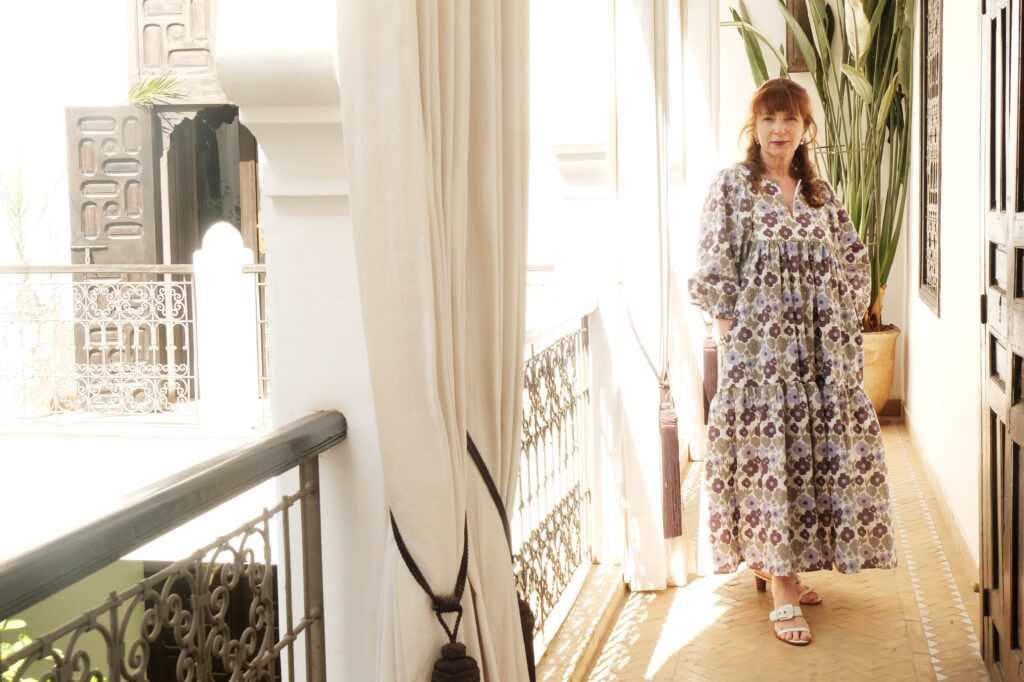
The Fabric
Suggested fabrics are Gauze, Dobby Voile, and Crepe de Chine.
I think that it would work equally well with linen, cotton, chambray, silk, heavy weight satin or even chiffon for a layered look.
I stumbled upon a wonderful floral printed cotton from India at my local fabric shop. The price of 40 DH ($4 or just over £3) was too good to leave in the shop.
This project is a great choice if you have a collection of braids and trims in your haberdashery collection.
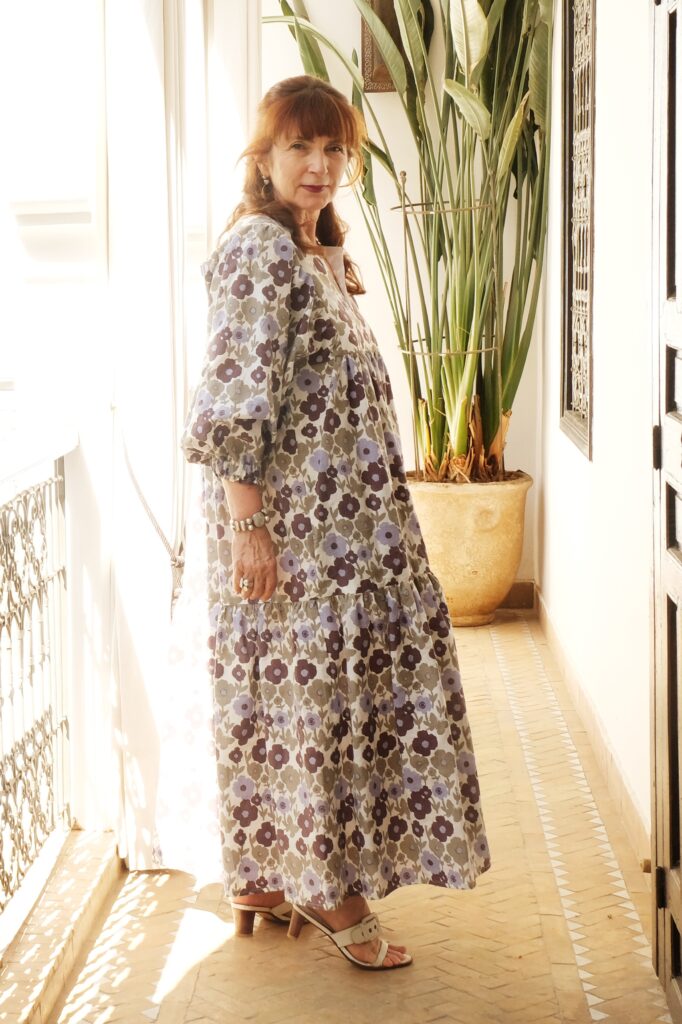
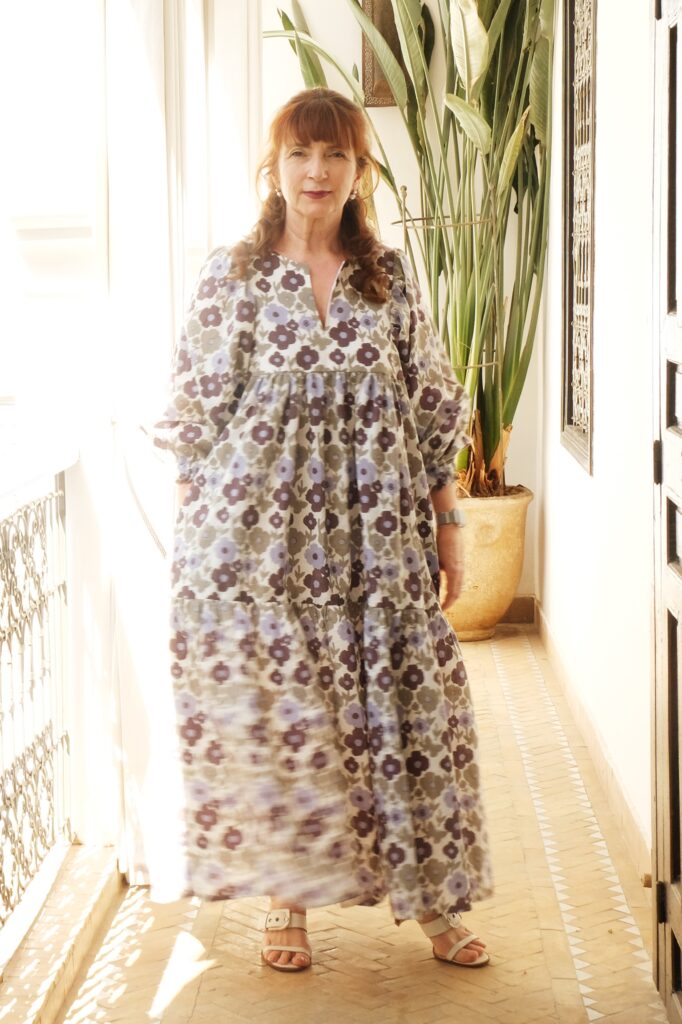
Making the dress
I chose to make view D.
The pattern states that it is easy to make, and it truly is. This is a pull on top, so there are no darts, zips or buttons required. This project is a great option for someone new to sewing because the sleeves are gathered and attached instead of being set in.
To account for shrinkage, I pre-washed the fabric before cutting out the pattern pieces. I chose to overlock all the pattern pieces, to prevent fraying.
I followed the pattern instructions, which were easy to follow, even for someone unfamiliar with sewing.
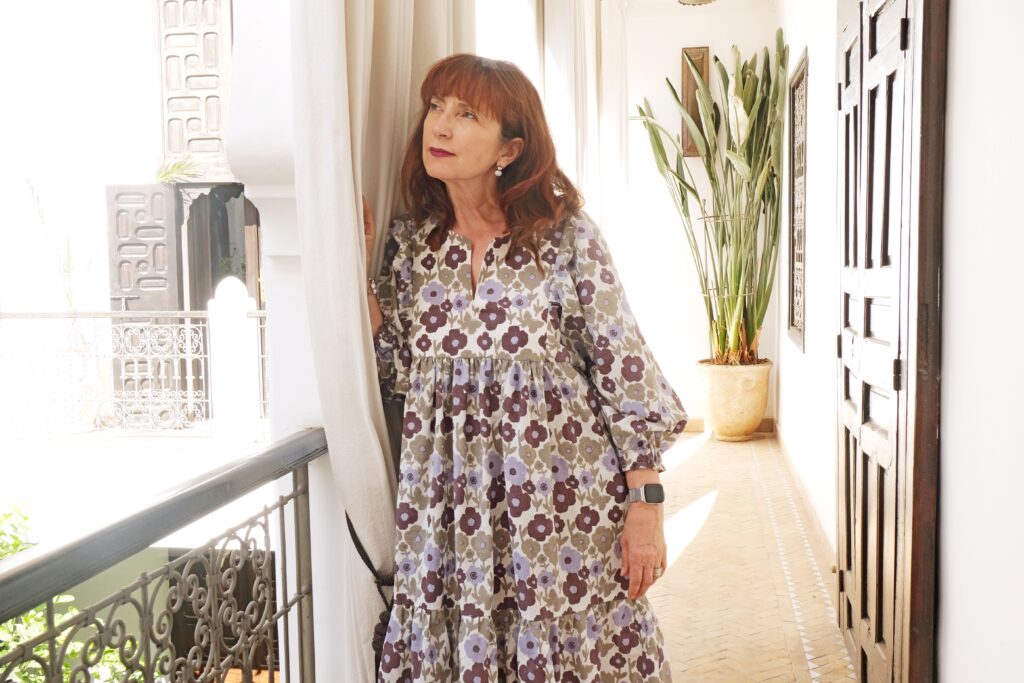
I had planned to top stitch the neckline, but discovered that my cotton had enough body and that it wasn’t necessary. The fabric is a little transparent, so I lined the bodice panel with plain cotton to prevent the pattern from showing.
I usually have to narrow the shoulders on most patterns, but on this occasion, it did not need any alterations, and the rest of the make came together like a dream!
To make the blouse into a dress, I added just one tier measuring 280 cm (2 widths) x 58 cm, including a joining seam and hem. You could of course lengthen the blouse layer to any length that you prefer, or simply add one tier.
The dress needed pockets of course. Once again, I used plain cotton to construct the pockets because the pattern would have shown through if I had used the same fabric.
Finally, I increased the length of the sleeves to enable deep elasticated cuffs.
The Cost
Fabric: 60 DH
Total cost: 60 DH (£5 / $6)
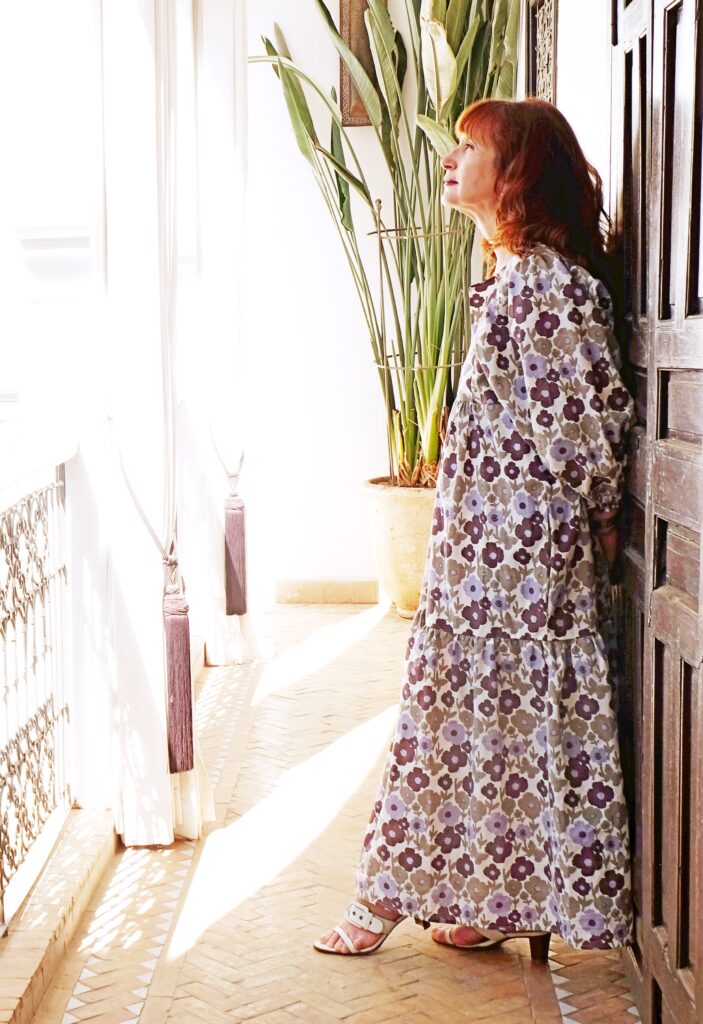
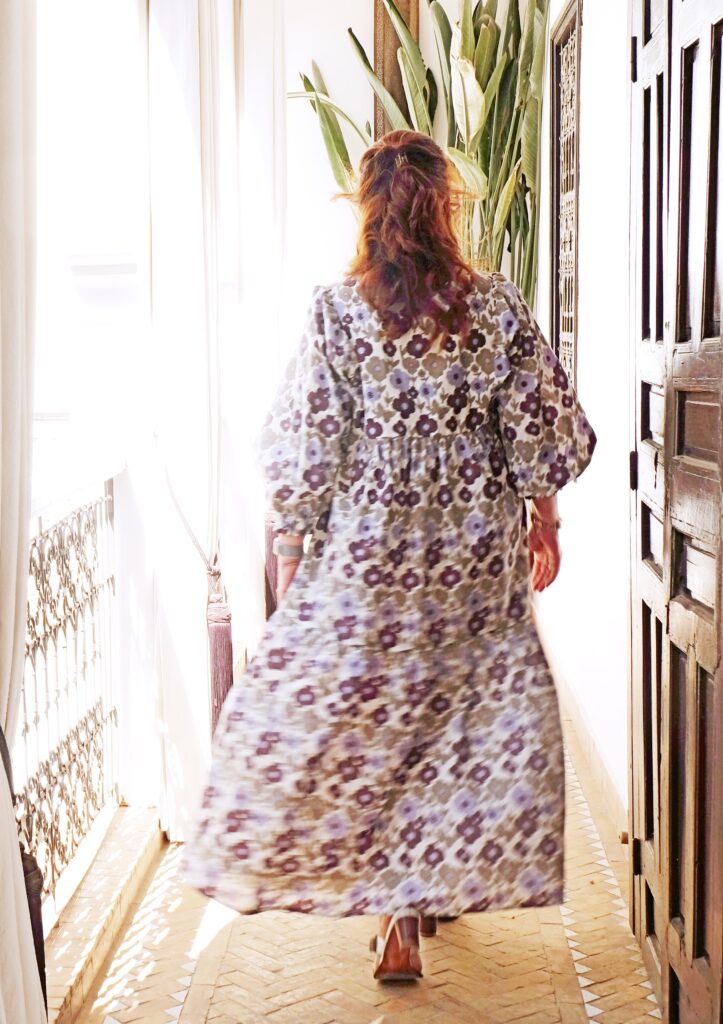
Alterations & tips
1. I added a tier to make the blouse into a dress.
2. I lined the bodice panel with plain cotton to prevent the design from showing through.
3. I made sure to include pockets, of course!
4. I removed the bulk by overlooking the seams once the sleeves and skirt were joined.
5. I added a deeper return on the cuff to allow for a more substantial elastic. This enhances the sleeve’s detail and substance.
6. I had the idea of adding a braid or lace detail to the bodice and cuffs. It wasn’t necessary and it seemed excessive with the fabric I chose. It would be worth considering with a plain fabric though.
7. You could add lace panels where the tiers are joined.

Conclusion
I regret not buying this pattern sooner after having looked at it for so long. This blouse is both dramatic and easy to make.
After making a dress out of the pattern, I now have to go back and make a blouse. I’m certain that I’m already addicted to this pattern because there are so many variations that can be made!
An understated linen, or an Ankara print, or maybe even a glamorous raw silk would transform it into something incredible. From casual to an evening show stopper, the result is up to you. This means that this pattern is worth investing in with plenty of potential. From tops to hacked dresses, no one would ever need to look the same.
Using a special piece of fabric that you’ve been saving in your stash is a perfect excuse when making the yoke panel. This blouse is ideal for pairing with patchwork fabrics or offcuts.
However, this dress can be worn throughout the seasons, depending on your fabric choice.
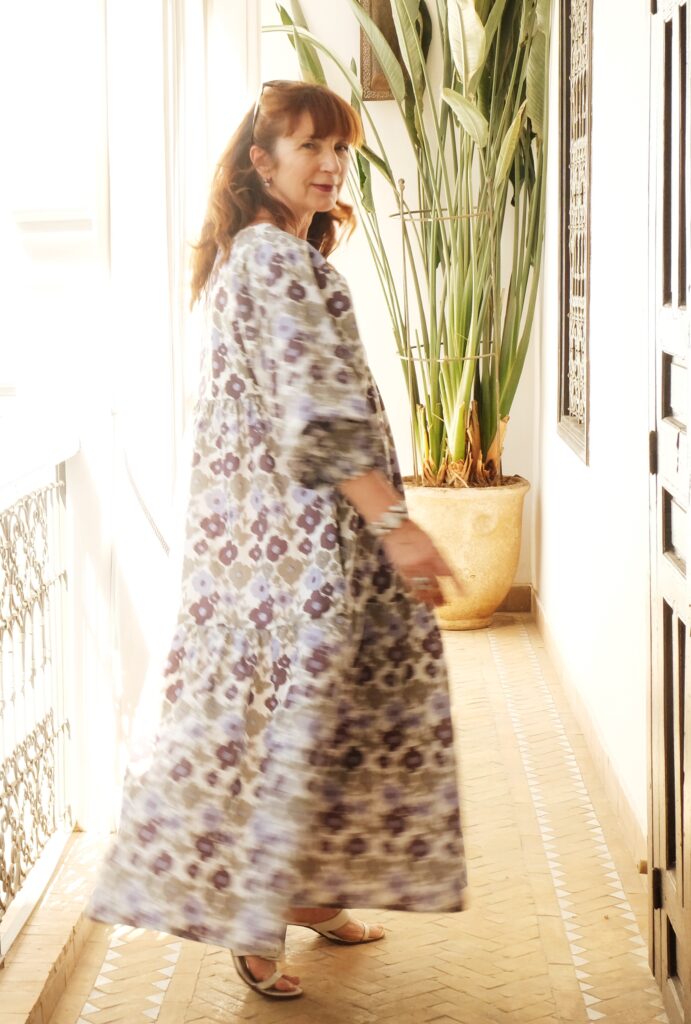
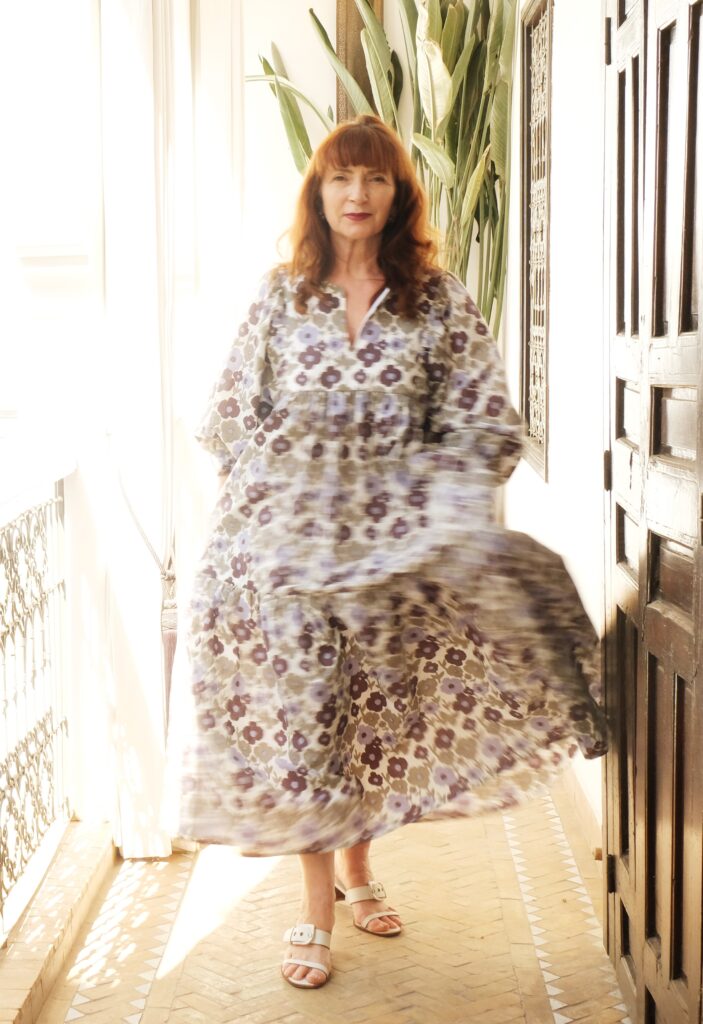

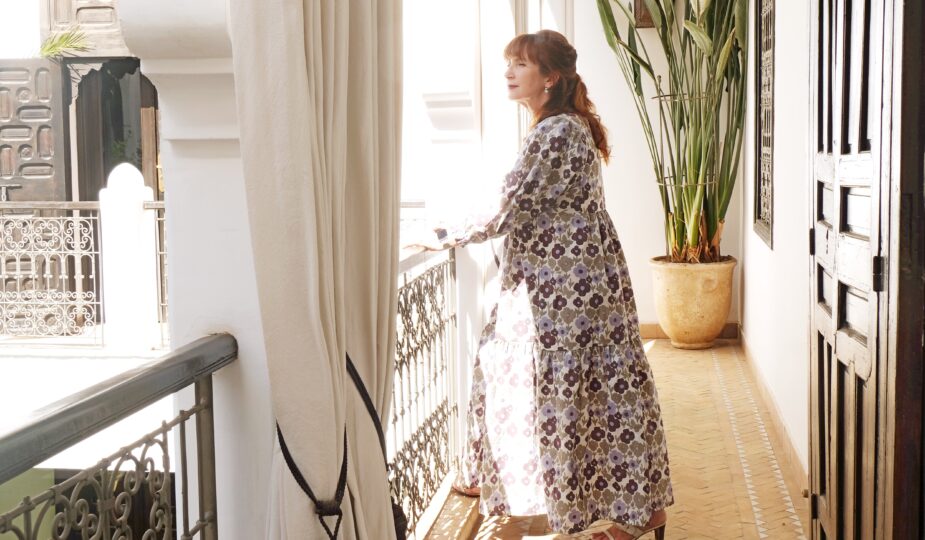
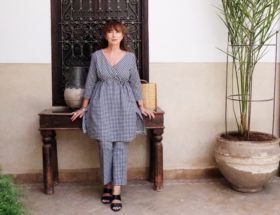
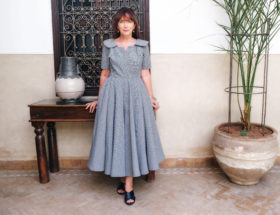
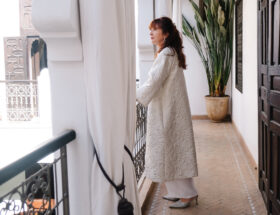

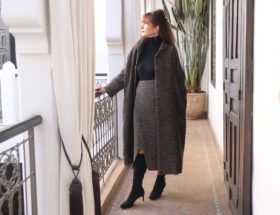
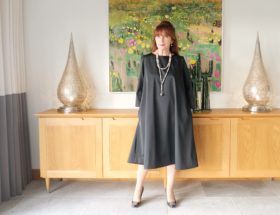
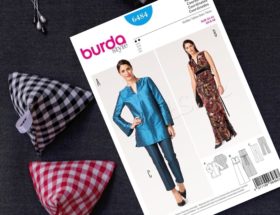
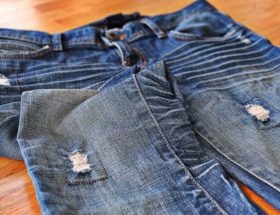
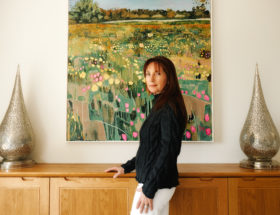
Leave a Reply